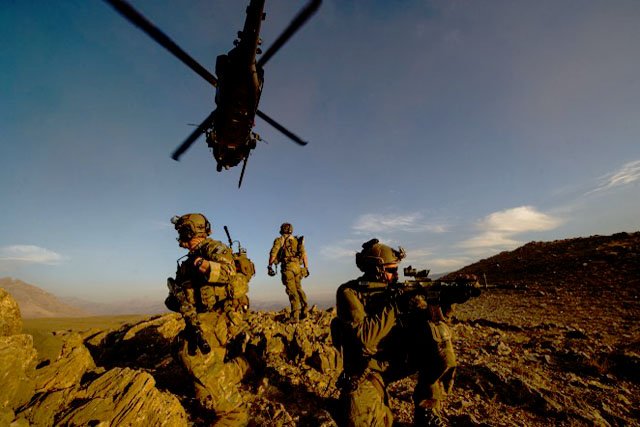 With cameras – 40 in all — affixed in every corner of the rescue helicopters, and even on the fueling boom that is affixed like a lance,along with cameras on the helmets of the team as they run or point or begin their rescue operations, there is an immediacy and realism to the new six-part series “Inside Combat Rescue” (National Geographic channel, 10 p.m.) than most such war coverage. The smoke and dust may start eking out of the screen, it’s so in your face.
With cameras – 40 in all — affixed in every corner of the rescue helicopters, and even on the fueling boom that is affixed like a lance,along with cameras on the helmets of the team as they run or point or begin their rescue operations, there is an immediacy and realism to the new six-part series “Inside Combat Rescue” (National Geographic channel, 10 p.m.) than most such war coverage. The smoke and dust may start eking out of the screen, it’s so in your face.
And the injuries of the fallen soldiers they rescue, severed limbs mostly, but also critical shots to the chest and other vital parts, are so vivid, there is a viewer warning.
But it may be the footage shot back at base camp in Kandahar, in between calls, that are the most telling, where the Pararescuemen — whose nickname PJs sounds more like Nick Jr. characters — unwind, consider what they’ve seen, think of loved ones and in general let it all sink in.
And there’s so much to take in. Ten years of this mayhem in Afghanistan, with an end somewhere in sight beyond the smoke and dust. But for now those incessant calls to “scramble” and get into the areas of action, bringing back injured fighters to hospitals.
The National Geographic series is one of only a very few such glimpses inside the war, which was so tightly controlled by the military in the start. Following in the footsteps of such films as “Restrepo” (which also showed on Nat Geo) and “Baghdad ER” on HBO, the access granted by the military is the opposite of the days when journalists’ cameras were kept from injuries or casualties.
At the same time, “Inside Combat Rescue,” whose heroic duties none could find fault with politically, serves as a kind of pure recruitment tool for the Air Force. Though the music is unnecessarily heavy, the drums needlessly booming, the action in general speaks for itself, and the well-spoken participants, who have had to endure years of Navy SEAL – like training on top of their paramedic skills, may be the best soldiers to get TV attention.
The Air Force gets final cut on the project and it’s interesting to see what’s blurred in the final analysis and what isn’t. Some of the patients are blurred, especially those in the Afghan army (signing a release is not the top of their list at the time of their rescue), but others, surprisingly are not. Computer screens and maps back at home base are blurred so as not to give away positions or plans (plans as of last summer) to, uh, viewers of National Geographic Channel.
For all that cloaking, the subjects themselves are refreshingly open about their duties, their families and their own well being.
Some of the brass say there are parts of the show that give them fits — wearing sunglasses on their head against regulation, dipping snuff or dropping f-bombs right and left (bleeped for TV). But the good of what they do overshadow all that.